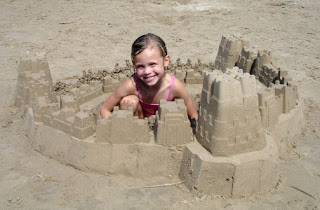 “Inspiration is for amateurs. The rest of us just show up and get to work. If you wait around for the clouds to part and a bolt of lightening to strike you in the brain, you are not going to make an awful lot of work. All the best ideas come out of the process; they come out of the work itself.”
“Inspiration is for amateurs. The rest of us just show up and get to work. If you wait around for the clouds to part and a bolt of lightening to strike you in the brain, you are not going to make an awful lot of work. All the best ideas come out of the process; they come out of the work itself.” Now while I do really appreciate the work that Chuck Close does, but I have to partially disagree with his quote. He is correct that you shouldn’t wait around for inspiration to spontaneously happen, but inspiration is a part of most art forms whether it be visual, musical, literary or even culinary because it is a part of the process. Inspiration is a process within the process of creating art and it is achieved through different methods of exploration.
Like in my last art blog article I am going to talk about various methods of how to gain inspiration, to flex you imagination or to unclog a creative blog. If you are interested in the prior methods I talked about you can find them here imagination-inspiration-and-creative part 1
Stop Thinking!

Thinking is overrated when you are trying to achieve something creative. Cognitive thought is only required for helping to solve problems you have not encountered in the past and it takes a lot of energy out of your system in the form of lowered glucose levels. By the time you are done “thinking” about what to do, your energy levels become lowered to the point where you loose the drive and ambition you had when you started the process. If you started the creative process by trying to solve too big of a problem you will find yourself trying to solve and almost impossible problem. Let go, start small, and draw upon what you already know and if that is not enough then go out and experience something new!
Visualize It!
This technique is similar to daydreaming but is more controlled. Michelangelo said, “ every block of stone has a statue inside it and it is the task of the sculptor to discover it” and all that we have to do is remove the excess stone. Michelangelo could see the statue in the stone before he sculpted his famous David statue. When you visualize what you want to achieve you are creating an actual long term memory. For years I have often did this naturally and when it occurred it was like I predicted the future. Then when you apply this visualization to other standard processes it is easier to achieve, with less work and greater success. However, visualization is not a short cut for prep work and when creating David, Michelangelo created many mock statues on a smaller scale after visualizing it to help with his process. By visualizing what you want to achieve and to put it into your long term memory you use less of your upper cognitive resources, so start picturing what you want to achieve before you begin work.
Play, Don’t Work!
 There is a big difference between work and play but both can be a productive or unproductive activity. Imagine back when you were a kid on the beach or in a sandbox and you started to build a sand castle or something similar. In its construction, you were in all probability very industrious in its creation but was it labor or play? I would argue, at the time of creation, that sand castle just felt like playing around despite the fact you put so much effort into it. When we play, while we might expend a lot of energy, we often don’t feel to tired even after play, but when we “work”, at a job that you may not like, you use up to many of your resources and become exhausted. When we play or minds are open and pliable but when we “work” our minds become closed and we rely to much on our cognitive minds if we are not use to that work. So, if you find that your current process has become to much of a chore it is a good idea to try and find a way to make it feel fun and a good way to do this is to make it like or similar to a game. If you are not having fun or you don’t even get satisfaction from what you are doing then that task is not really worth doing over and over again, there is no point.
There is a big difference between work and play but both can be a productive or unproductive activity. Imagine back when you were a kid on the beach or in a sandbox and you started to build a sand castle or something similar. In its construction, you were in all probability very industrious in its creation but was it labor or play? I would argue, at the time of creation, that sand castle just felt like playing around despite the fact you put so much effort into it. When we play, while we might expend a lot of energy, we often don’t feel to tired even after play, but when we “work”, at a job that you may not like, you use up to many of your resources and become exhausted. When we play or minds are open and pliable but when we “work” our minds become closed and we rely to much on our cognitive minds if we are not use to that work. So, if you find that your current process has become to much of a chore it is a good idea to try and find a way to make it feel fun and a good way to do this is to make it like or similar to a game. If you are not having fun or you don’t even get satisfaction from what you are doing then that task is not really worth doing over and over again, there is no point.Now of course, I don’t claim to know all there is to know about being creative, but I do try to communicate what I do know on to others. I am also very interested in knowing what you all thinking about being creative and would love to hear from you all.

No comments:
Post a Comment